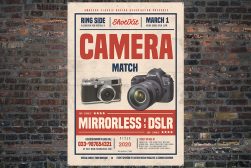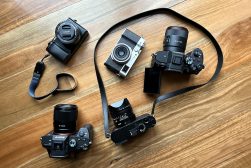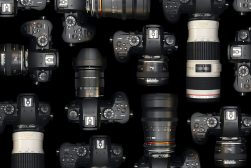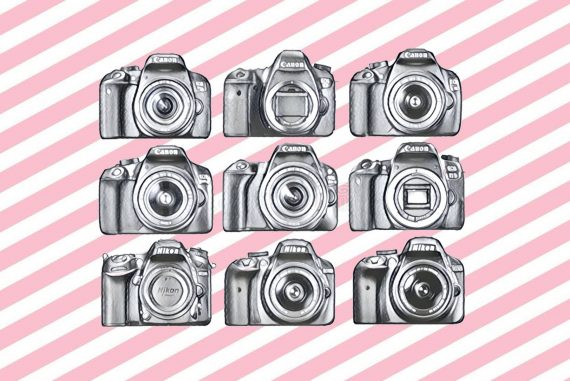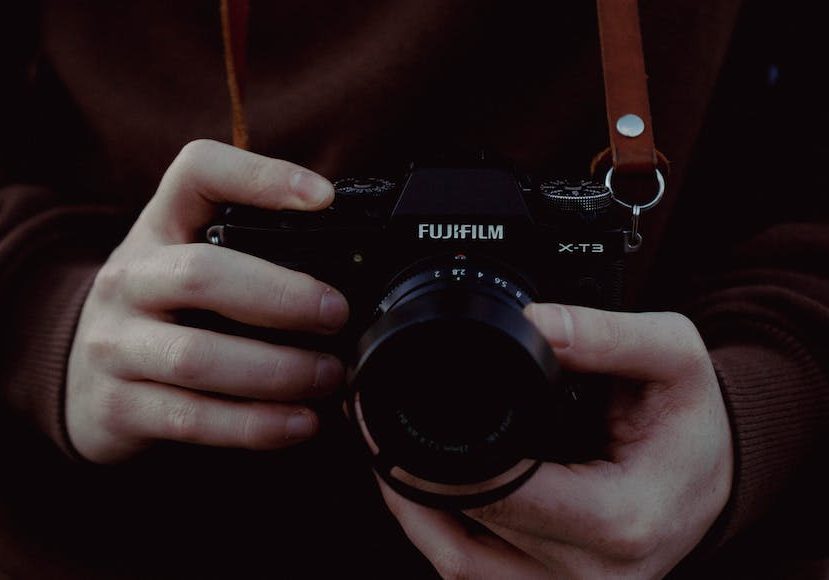
Beginner’s Guide to Mirrorless Cameras in 2024
Unlock the full potential of mirrorless cameras with our comprehensive guide, exploring their features, benefits, and impact on modern photography.
This is our beginner’s guide to mirrorless cameras.
Read on, and you’ll find out exactly what mirrorless cameras are, whether they’re good for beginners, and how to choose one if you’re thinking of investing.
We’ll look at different brands, any essential things you’ll need to know about shooting with mirrorless systems, and lots more.
So, let’s get stuck in.
What is a Mirrorless Camera?
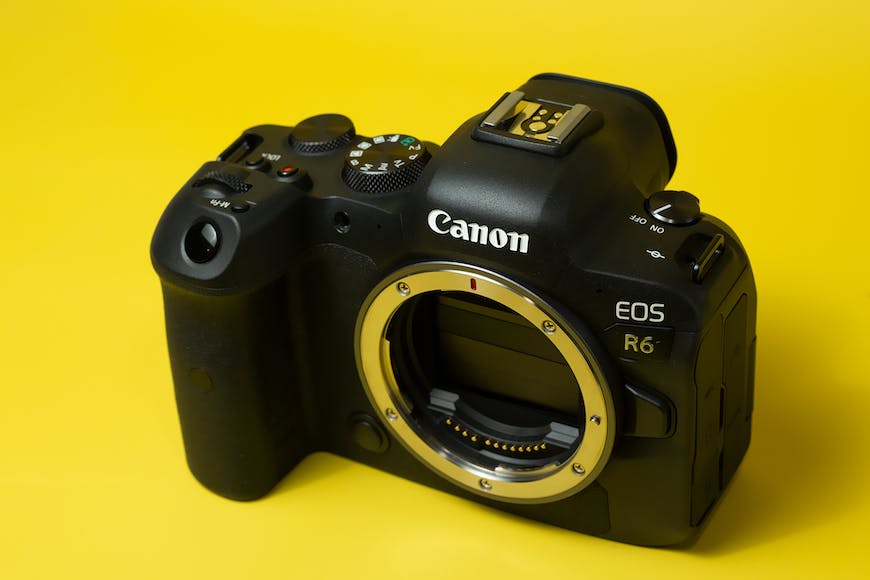
Credit: Ivan Babydov
A mirrorless camera, as the name suggests, lacks the mirror system found in traditional DSLR cameras.
These cameras use a digital display system to preview the image directly through the lens on an electronic viewfinder (EVF) or the camera’s LCD screen.
While they still use powerful digital sensors and interchangeable lens systems in the same way that DSLRs do, due to the lack of a mirror system, they are more compact and lightweight.
To understand more about what mirrorless cameras are, let’s answer another question.
What’s the Difference Between Mirrorless and DSLR Cameras?
DSLRs employ a mirror mechanism that reflects light into an optical viewfinder, allowing you to see the scene optically through the lens.
Mirrorless cameras omit this complex mirror system and optical viewfinder system. Instead, they use their electronic viewfinders (EVFs) or the camera’s LCD screen to provide a digital preview directly through the lens.
DSLR Cameras are heavier and bulkier thanks to the mirror and prism system. This also makes them more robust, but less portable than mirrorless cameras, which are more compact and lightweight.
Technologically speaking, mirrorless cameras are more advanced than DSLRs. One example of this is their autofocus capabilities.
Traditional DSLRs use a separate autofocus sensor, and while many have highly effective autofocus systems, they may not match the speed and accuracy of their mirrorless counterparts, especially in continuous autofocus modes.
Meanwhile, many modern mirrorless cameras feature advanced on-sensor phase-detection autofocus, offering lightning-fast and accurate focus performance.
Some models even employ smart tracking modes and eye-tracking technology for precise subject focus.
But, this kind of heightened technology, and the fact that there is no way around using electronic displays for composing shots, comes at a cost. Mirrorless cameras are known for chomping through batteries.
DSLRs often have longer battery life as shot composition doesn’t need any extra juice other than the camera being turned on. Your battery may even last a full day of shooting.
When it comes to lens compatibility, DSLRs have a long-established range of native lenses, and their optical viewfinders make them compatible with a diverse selection of third-party lenses.
For mirrorless systems, native lenses are often limited for now, given that it’s a relatively new technology, but the range is growing all the time. It’s also possible to use DSLR lenses on mirrorless cameras if you use an adaptor.
For more information on the difference between these systems, have a look at this mirrorless vs DSLR guide.
Are Mirrorless Cameras Better for Beginners?
There’s no definitive answer to this question, as it depends on how much money you, as a beginner, are willing to spend, and what your personal preferences for starting your photography journey are.
There are advantages to starting photography with a mirrorless camera system, but at the same time, there’s also nothing wrong with starting out with a DSLR.
Mirrorless cameras have a compact design and advanced autofocus and are the future of photography, so are also where all the technological advances will now take place.
However, DSLRs are often more budget-friendly, have a more robust design, and provide a classic optical viewfinder experience, which is closer to traditional photography.
They also give you access to a greater range of lenses, although this will not be the case forever.
What Are the Disadvantages of Mirrorless Cameras?
Mirrorless cameras, although they are a wonderful invention and the future of photography, are not without their drawbacks.
The first one, and what most mirrorless users complain about, is how quickly they drain their batteries.
Mirrorless cameras rely heavily on electronic displays, and that uses a lot of power. Beginners should be mindful of battery management and having spares, especially during long shoots.
Right now, entry-level mirrorless cameras are slightly more expensive than their DSLR counterparts. That, obviously, has an impact on your budget and whether you can afford other accessories or lenses as you start out.
While mirrorless systems are expanding their lens line-ups, they still don’t offer a huge range of native lenses.
Beginners should make sure that the lens they want is available or, if on a tight budget, that they can find a DSLR lens compatible with their mirrorless system via the use of an adaptor.
And, before investing in an adaptor, you should research whether it works well with your system. Some don’t perform optimally.
Some beginners accustomed to optical viewfinders in DSLRs may find it challenging to adapt to using an electronic viewfinder. What you see is what you get. It’s a different way of shooting, and it can be a little disorientating to begin with.
Ergonomics can also be an issue. DSLRs generally fit well in the hand, but the compact design of mirrorless cameras can make them less comfortable and secure to hold.
Lastly, some entry-level mirrorless cameras are not fully weather-sealed; a disadvantage to anyone planning to shoot in challenging conditions.
Do Professionals Use DSLR or Mirrorless?
That really depends.
The kind of camera a professional needs will be determined by the kind of work they want to produce and the conditions they’re shooting in.
Remember, many art and editorial photographers still shoot film with analog cameras!
That being said, established professionals often lean towards DSLRs, valuing their reliability and optical viewfinder experience, especially in fields like photojournalism, sports, and wildlife photography.
On the other hand, the rapid advancements in mirrorless technology have led to high-performance cameras embraced by professionals seeking innovation, portability, and superior video-making capabilities.
Some professionals (including myself) adopt a hybrid approach, using both DSLRs and mirrorless cameras based on project needs.
While our latest camera survey revealed that the industry as a whole is witnessing a gradual shift toward mirrorless systems, a professional photographer’s choice between a DSLR and a mirrorless camera (or anything else) will always depend on the specifics of each assignment.
How to Choose a Mirrorless Camera
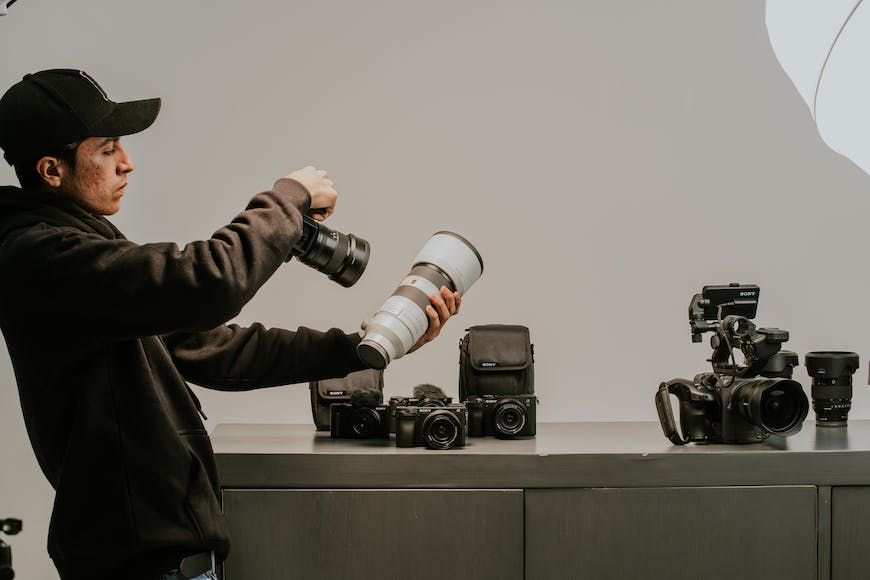
Credit: Amar Preciado
Choosing the right mirrorless camera as a beginner requires you to think carefully about your photography goals, budget, and specific preferences.
First, you need to think about what your focus will be. Will it be travel? Portraits? Landscapes? Or do you want to shoot video?
That will help you work out the model of cameras you should be looking at and also the lens (or lenses) you’ll need.
You need to think about your budget. Then cross-reference that with the specs of the cameras in your budget to check if they align.
It’s a good idea to go to a physical camera shop to test some of the cameras you’re thinking of investing in.
Doing that will give you an idea of whether the user interface and controls work for your needs, and will also help you know if the mirrorless camera is ergonomic.
You should also check out online forums and read reviews to get insights into how your potential cameras perform in the real world.
What Specs Should I Look for in a Mirrorless Camera?
Generally, there are a few things you need to look out for when considering buying a mirrorless camera.
The bigger the sensor, the better the image quality and low-light performance. But the bigger the sensor, the higher the price, so consider your budget and what you’ll actually be shooting.
Good autofocus is essential for beginners, as it frees you up to concentrate on composition. Look for cameras with advanced autofocus systems, for example, phase-detection technology.
You’ll also want to consider image stabilization. This is not essential, as some lenses incorporate this, but anything that minimizes camera shake is beneficial.
If you’re interested in videography, consider the camera’s video capabilities. Look for features such as 4K recording and a good variety of frame rates.
Also, decide whether you prefer composing shots through an EVF or on an LCD screen, as some mirrorless cameras have an EVF while others don’t.
Consider the camera’s connectivity features, including Wi-Fi and Bluetooth. For example, if you’re a beginner who wants to be live-streaming or quickly sharing content on social media, you’ll want to be able to do this quickly either directly from the camera or from your smartphone.
It’s important too, to assess the availability of lenses for the specific mirrorless system you’re considering. A diverse lens selection enhances the versatility of your camera for various photography styles.
Lastly, check whether the camera has weather sealing. Ideally, it should, and it’s a great feature to have, as that’s one less thing to worry about.
How to Choose a Mirrorless Camera for Photography
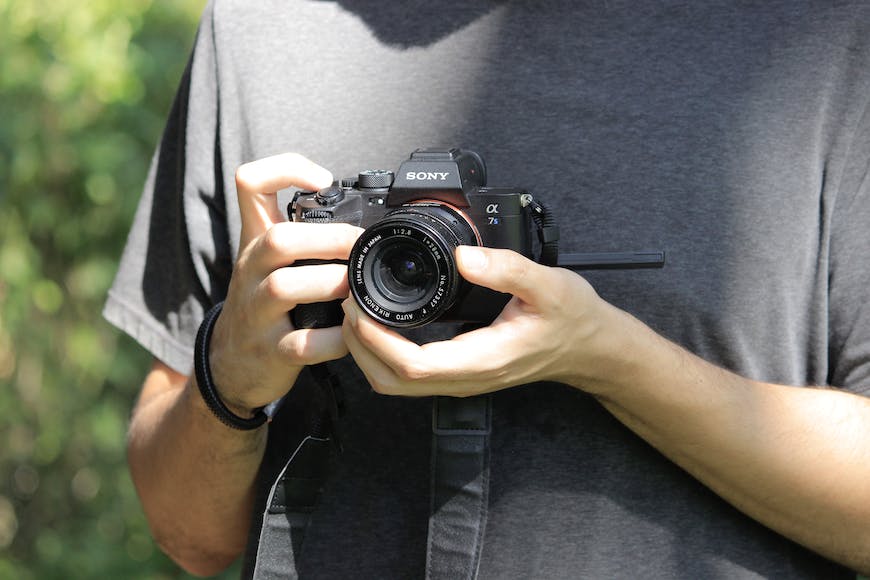
Credit: Ornan Rodriguez Velazquez
Essentially, when choosing a mirrorless camera specifically for photography, you’ll need to consider everything in the section above: sensor size, autofocus capabilities, whether it has an EVF or not, image stabilization, weather-sealing, connectivity, and lens selection.
In addition to these things, you should also consider your photography preferences and goals.
What exactly do you want to shoot?
Do you need a big sensor?
Will you be printing your photos? If so, consider getting a higher-megapixel camera.
Do you want to travel extremely light? If that’s the case, consider a micro-four-thirds or APS-C camera.
How long do you think you’ll be shooting for? If you only think you’ll be doing short photo sessions, then you don’t need to worry about battery life so much.
Also, think about how much you’ll be shooting indoors or in low light. If you feel like you won’t be, you can choose a mirrorless with a smaller sensor and/or a smaller native ISO range.
Likewise, if you really need your camera to be effective in low light conditions, you’ll need the opposite: a big sensor and a high native ISO range.
How to Choose a Mirrorless Camera for Video
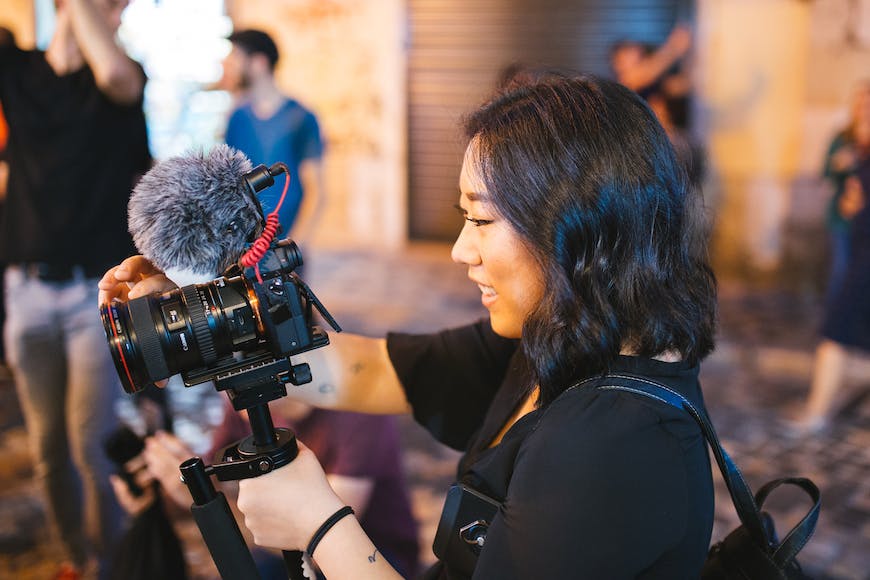
Credit: Fox
If you want a mirrorless camera for video, you’ll need to think about all the things mentioned above in the specs section, but there are also some video-specific things you’ll need to consider.
First of all, you’ll need to define your goals. Creating vlogs, shooting interviews, or filming cinematic sequences won’t need the same equipment.
Look for a camera that offers the resolution you’ll need. Those that provide a variety are best.
4K will give you high-quality footage, but you also need to consider the availability of different frame rates, especially if you plan to experiment with slow-motion or cinematic effects.
If slow-motion is part of your videography vision, check the camera’s slow-motion capabilities. Some cameras offer higher frame rates for smooth slow-motion footage.
Prioritize cameras with reliable autofocus during video recording (and you need to check this, as some cameras can have great autofocus capabilities for stills but not for video).
Advanced autofocus systems, such as dual-pixel or phase-detection technology, ensure that your subjects stay sharp, even in dynamic scenes.
Assess the camera’s audio capabilities, including the presence of a microphone input. Good audio quality is essential for professional-looking videos, so having the option to connect an external microphone is a must.
A flip-out or articulating screen is invaluable for videographers, allowing you to monitor your composition from various angles, especially when capturing yourself or shooting in tight spaces.
Research the camera’s video codecs and bit rates. Cameras with higher bit rates and support for professional video codecs offer greater flexibility in post-production, allowing for more detailed and editable footage.
Other things to consider are the camera’s size and ergonomics. With video, more so than stills, you’ll need to be holding or carrying the camera for a long time, and you don’t want to become fatigued.
The battery is also very important. Filming uses a lot of power, so you need to look for a camera that uses batteries efficiently and doesn’t suffer from any overheating issues that could cut short your video shooting time.
- Find out the best cameras for vlogging and the best 4k cameras for videography and filmmaking.
What Are the Best Mirrorless Camera Brands?
The first mirrorless cameras were compact, micro-four-thirds devices, but it wasn’t until Sony introduced their Alpha series that things got serious in the mirrorless camera market.
As such, Sony has always been, and continues to be, a trailblazer in the mirrorless camera market, consistently delivering cutting-edge technology and innovation.
Sony cameras are known for their impressive autofocus systems, high-resolution sensors, and compact designs. They are also known for having user-friendly interfaces, which makes them a solid choice for those just starting in photography.
Canon has a long-standing reputation for producing reliable and versatile cameras, and their mirrorless options are no different.
Canon mirrorless cameras, like their DSLRs, are known for their intuitive controls, making them ideal for beginners, and their outstanding image quality.
Nikon is another photography stalwart, and, like Canon, their mirrorless offerings have the same hallmarks as their DSLRs.
They are reliable, with great image quality, and good autofocus capabilities.
Fujifilm is the fashionable beauty of the mirrorless camera scene. They have a unique, retro design reminiscent of classic film cameras.
That vintage exterior, though, houses cutting-edge technology, and Fuji’s mirrorless cameras are well-known for producing high-quality images. They’re also prized for their distinctive film simulation modes.
The tactile dials on their camera’s housing make them particularly enjoyable for anyone who appreciates a more hands-on approach to photography.
- Check out our guide to the best Fujifilm cameras.
Finally, Panasonic is another reputable maker of mirrorless cameras that are especially good for those practicing videography
Panasonic often has advanced video features, such as high frame rates and V-Log recording, making them a favorite among content creators.
For some specific top picks, head to our article on the 10 mirrorless cameras we love this year.
6 Key Things to Know About How to Use a Mirrorless Camera
When using any camera, you need to learn the basics, such as how adjustments to aperture, shutter speed, and ISO (aka, the exposure triangle) affect your exposure. These are the same with every camera.
You need to know what each button and dial on the camera does, and you must familiarise yourself with the user interface and menus. These are different with every camera.
But when it comes to using mirrorless cameras, there are several key things to keep in mind.
Battery Management Is Crucial
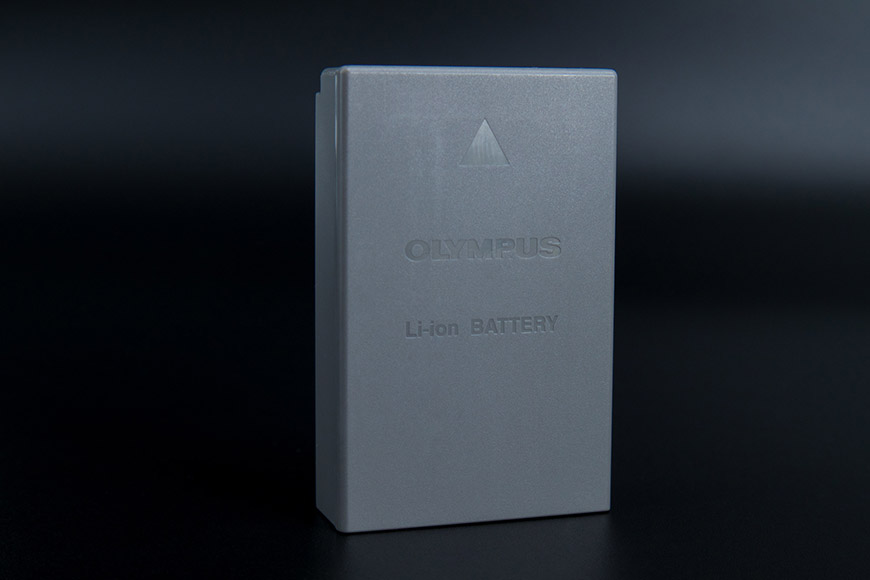
Credit: Ivan Radic, CC BY 2.0 DEED, via Flickr
Mirrorless cameras can be more power-hungry than other camera types, for example, DSLRs.
Whereas other cameras don’t rely so much on electrical readouts for shot composition, there’s no way around this with mirrorless systems, so the camera is always working hard, always using juice.
Here are a few things you can do to conserve your battery:
- Turn it off when not in use.
- Lower the EVF and LCD brightness.
- Turn off anything you don’t need at the moment: Bluetooth, Wifi, GPS, IBIS.
Even so, to be on the safe side, always carry spare batteries, especially for extended shooting sessions.
The WYSIWYG EVF on a Mirrorless Camera Has Both Pros and Cons
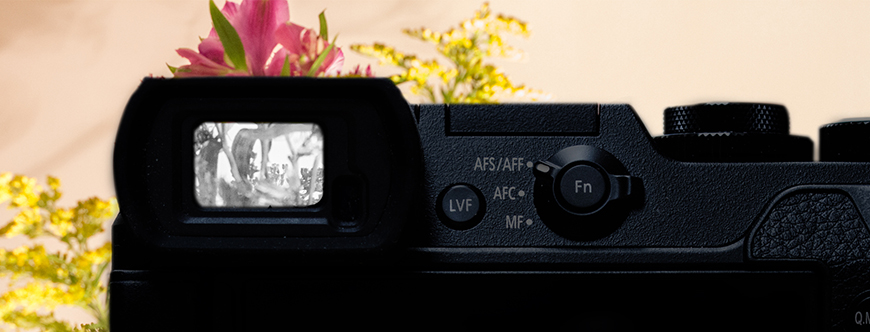
Simulation of EVF. Credit: Rodrigo.Argenton, CC BY SA 4.0, via Wikimedia Commons
One of the main advantages of EVFs is the real-time preview of your shot. You see exactly what the camera sensor sees, including the effects of exposure settings and white balance.
This allows beginners (and professionals) to make adjustments on the fly and better understand the impact of various settings.
EVFs also often come with features like focus peaking and magnification, which help users focus manually.
Focus peaking highlights in-focus areas in a scene, while magnification allows you to zoom in on specific details.
They also provide an overlay of essential information, such as exposure settings, a histogram, and focus points. On DSLRs, you could normally only get this on the LCD screen.
This visual feedback helps beginners especially understand their camera’s settings without taking their eyes off the viewfinder.
EVFs are brighter, and also, this brightness is adjustable. So, in challenging lighting conditions, EVFs can offer better visibility than optical viewfinders.
But…
EVFs are more of a power drain than their optical counterparts. They are one of the reasons you’ll need to carry spare batteries.
And they’re not perfect. In high-speed shooting situations, some EVFs may exhibit a slight lag.
This technology is improving all the time, but it’s still a concern for anyone wanting to shoot sports, action, or video.
Another downside is that, because an EVF is an electronic display, extended use can be a strain on the eye. So it’s a good idea to take breaks and/or switch between the EVF and the LCD so as not to get fatigued.
Finally, as I mentioned before, there’s just the general strangeness of using a digital representation of a scene as opposed to an optical one.
If you’re transitioning away from a traditional setup, there’s a period of adjustment to contend with.
Most Mirrorless Cameras Have a Silent Shutter Option
The silent shutter option allows you to be more discreet in settings you need to be, and if you’re shooting video, you can record scenes without any distracting shutter noises.
Not only that, but the complete absence of mechanical movement during image capture can contribute to reduced camera shake.
However, when selecting this option, you should be aware that it does also have some downsides.
You may get a rolling shutter effect, and therefore some distortion, when using it at high shutter speeds.
And, if you’re using an external flash, you may have issues syncing.
Some DSLR Lenses Work Great With (Certain) Mirrorless Cameras
Although DSLR lenses are designed to be used with cameras equipped with a mirror box and an optical viewfinder, they can be used with mirrorless cameras by way of an adaptor.
That’s especially handy for anyone who already has a collection of DSLR lenses.
It’s easy on the budget, as your existing lenses can be seamlessly integrated into your new mirrorless system.
Not only that, you have access to a greater range of lenses than are currently available.
But, while using DSLR lenses with mirrorless systems can often work very well, you need to do your research into exactly which lenses work well with exactly which cameras.
Autofocus performance can vary. Some adapters and camera lens combinations may not provide the same level of autofocus speed and accuracy as native lenses.
Autofocus Is Your Friend
Mirrorless cameras often boast advanced autofocus systems that will make getting the right parts of your shots in focus a breeze.
It’s one of the ways in which mirrorless technology is set up to give you as much chance to succeed as possible.
Understanding the different autofocus modes, such as single-shot AF for still subjects and continuous AF or eye-tracking for moving subjects, is essential.
Customizable Camera Settings
Many mirrorless cameras allow you to customize buttons and menus to suit your shooting style.
You might want to use a particular dial for ISO or switch around the shutter and aperture default settings. There are plenty of options available to you if you explore the camera.
Tailor the camera settings to your personal preferences for a more efficient and enjoyable shooting experience.
FAQs About Mirrorless Cameras
Should a beginner use a mirrorless camera?
Of course!
There are many reasons for a beginner to use a mirrorless camera.
They are generally very user-friendly, and for people just starting out, choosing mirrorless means getting in on the ground floor of the technology that is the future of photography.
What is the major drawback of a mirrorless camera?
Mirrorless cameras offer a lot of great features, but one major drawback is the amount of battery power they use.
Which brand is best for Mirrorless future-wise?
This is really hard to say, as the technology is changing all the time.
All of the major digital camera manufacturers are making mirrorless cameras now, and any one of them could take the lead.
Sony is generally considered to be ahead of the game, but it might not always be that way.
Whose mirrorless camera has the best autofocus?
Generally, mirrorless cameras are known for having advanced autofocus systems.
However, Sony is probably the market leader in this field, with their incredibly accurate eye-tracking autofocus.
Which brand has the best affordable lenses?
While Sony has the biggest range of native lenses, if you’re looking for affordable lenses, then I’d have to say Canon.
That’s because they have a vast amount of DSLR lenses that can be used with their R system, and a huge number of third-party lenses, for example, Tamron and Samyang, that can be used with the Canon EF to R adaptor.





